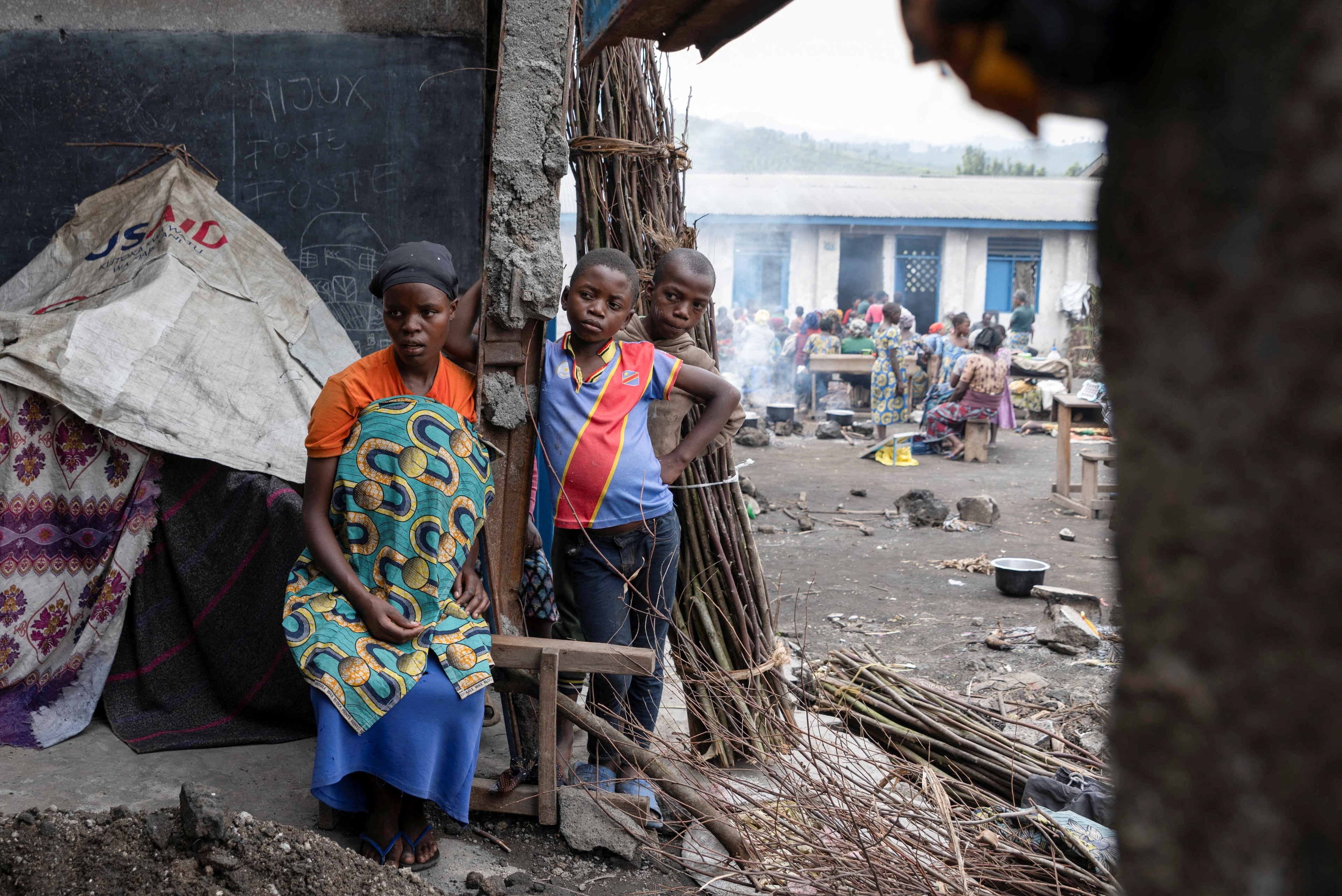London wants to treat violent crime like a disease

After several years of decline, knife offences in England are on the rise again.
Image: REUTERS/Luke MacGregor
Stay up to date:
United Kingdom
In November 2018, five people were stabbed to death on the streets of London in the space of six days. Three of the victims were teenagers. That spate of killings followed a summer filled with harrowing reports of knife violence.
After several years of decline, knife offences in England are on the rise again. According to the most recent crime figures from the Office of National Statistics, offences involving a knife or a sharp instrument are at the highest level ever recorded, at almost 40,000 for the year to June 2018.

Hospital statistics in England back up the trend, showing a 7% rise in admissions for assault by a sharp object over a similar period.
Almost 15,000 of those crimes took place in London.

The surge in stabbings has brought unwanted publicity and piled pressure on the police and Mayor Sadiq Khan to tackle the problem.
In response, Khan announced that the city will take a public health approach to violent crime: treating it as a disease that “infects” communities.
A new Violence Reduction Unit – made up of specialists in health, policing and local government – will lead and deliver this approach.
Although it sounds novel, this idea isn’t new; it’s been used elsewhere, and with great success.
A new strategy for tackling knife crime

The mayor’s strategy was inspired by a similar project in Glasgow, Scotland, where authorities adopted a long-term public health approach to tackling serious violence. A decade on, the project has delivered significant reductions in violence.
But perhaps the most well-known example is Cure Violence, a model pioneered by Dr Gary Slutkin, a former World Health Organization (WHO) epidemiologist and infectious disease control specialist.
After spending more than a decade working on epidemics in Africa and Asia, Slutkin returned to his native Chicago in 1995 and was shocked by the levels of violence in the city.
“City officials were trying to reverse the rising trend of violence, but what they were doing wasn’t working,” Slutkin told the World Economic Forum.
So he decided to deploy the same tactics he had used when dealing with epidemics such as cholera, Ebola, and HIV/AIDS which spread quickly from one person to another.
“I started to look at maps showing the places where violence was the most prevalent in the city, and they looked exactly the same as the health ones." Slutkin noticed that there was clustering: hotspots of violence. The maps showed the same type of wave that he'd seen in epidemics' patterns.
“So we tried to work out what the greatest predictor of violence was. The answer was a previous act of violence.
“The penny dropped then because the greatest predictor of a case of flu is being exposed to a prior case of flu. We could approach the problem in the same way as we did major health epidemics.”
Slutkin sees similarities between surging violent crime in London and the Chicago he came back to in the mid-1990s, which was experiencing a wave of homicides.
“It was in the papers every day and not just in Chicago – it was Detroit, New York, Baltimore, all over. It was really serious and nothing seemed to work,” he says.
Also, like in London, the perpetrators and victims of crimes in Chicago were getting younger.
“There were also things that really made no sense at all and that were startling, like a 12-year-old shooting a 12- or 13-year-old. It made no sense, but if you start to think of it as a contagious process picked up from others, then what is senseless starts to make sense,” he says.
The ‘violence interrupters’

Slutkin says that when it came to tackling the violence in Chicago there were two schools of thought: make the penalties harsher – in London there are also calls to increase sentences for carrying a knife – and solve the underlying social problems in the worst-affected areas: tackling poverty and social exclusion and improving education.
“We couldn’t get harsher because the penalties were already harsh and it wasn’t working. Solving every social problem is also a difficult thing to do.”
And tackling the gun control issue head-on was too difficult. “It’s such a political hot potato, and one that surfaces every time there is a shooting, but nothing really changes."
The solution, he found, was to tackle the problem “straight down the middle”, by engaging members of the community as “violence interrupters”.
It took four or five years, including hundreds of hours spent in meetings with local community groups, to come up with a viable model that could be put to the test.
Slutkin’s theory is that, like in an epidemic, you have to find infected people quickly and stop them from spreading the disease further.
Applied to Chicago, this meant finding recent victims of violence who wanted revenge, or people who had just come out of prison with old scores to settle, and using violence interrupters to help them change their minds.
The violence interrupters are often former gang members themselves who have credibility and are trusted in the local community.
“I saw that we were going to need outreach workers. I had used such workers already in AIDS reduction – using sex workers to reach sex workers to persuade them to use condoms – we knew we had to have workers who could do outreach and that had access and credibility with those that were involved in the shootings.
“There is a lot of talking to people: knowing what parties are going on, what basketball games, who just got out of prison, who’s feeling upset and is considering doing a shooting. (The violence interrupters) are hanging out in the neighbourhood and making their phone numbers available."
There is also a public education element to Cure Violence’s work.
“Just as the WHO might launch a public campaign about using condoms to stop the spread of AIDS… we were doing messaging about not shooting; helping your friends not shoot, cool down your friends and stop killing people.”
Stopping the killings
The results in Chicago were instant.
A 2009 study on the implementation of Cure Violence in eight communities found that between 1999 and 2007 shootings and killings dropped by 41% and as much as 73% in some areas.
Several independent studies have confirmed the positive results, such as this one in 2012 showing that Philadelphia saw a 30% reduction in shootings over one year due to Cure Violence’s programme.
Slutkin says despite the success of Cure Violence, there are many who insist the solution to violent crime is to issue tougher penalties. This is the case in England as well as in the US.
“The idea that violence can be stopped by people who are in the community, rather than punishing people, conflicts with many people’s worldview,” Slutkin says.
“Their worldview is that these are bad people, and the way to deal with them is to catch and punish. But if you realize this is a contagious health epidemic, then you realize that it can be tackled by the community itself," he adds.
Difficult to eradicate
Although he has not discussed his model for tackling violence with the Mayor of London, Slutkin says he’d “love to talk to him”.
He is hopeful that London’s public health approach might succeed: “It’s been proven to work in much more complex and disadvantaged areas.”
Last year, Khan launched a public education campaign, London Needs You Alive: Don’t Carry a Knife, targeting young Londoners via social media.
Accept our marketing cookies to access this content.
These cookies are currently disabled in your browser.
Like the Chicago model, London authorities are also engaging the services of youth workers in major trauma centres and hospital emergency departments to help steer young people who have been involved in knife crime away from violence in the future.
London’s Metropolitan Police Service is on board with the mayor’s strategy to treat violent crime as a public health issue, but wants to combine preventative services with more stop and search powers.
However, as with disease, violent crime can be extremely tough to eradicate. It is a difficult puzzle to solve – experts are often at odds over its complex causes and what makes it rise and fall. Drugs are a major contributing factor to the rise of violent crime in London, as is serious organized crime.
Khan acknowledges that London’s knife problem could take a decade to solve.
Don't miss any update on this topic
Create a free account and access your personalized content collection with our latest publications and analyses.
License and Republishing
World Economic Forum articles may be republished in accordance with the Creative Commons Attribution-NonCommercial-NoDerivatives 4.0 International Public License, and in accordance with our Terms of Use.
The views expressed in this article are those of the author alone and not the World Economic Forum.
Forum Stories newsletter
Bringing you weekly curated insights and analysis on the global issues that matter.
More on Resilience, Peace and SecuritySee all
Florian Krampe
July 31, 2025
Naoko Tochibayashi
July 28, 2025
Vanina Farber
July 21, 2025
Robert Piper
July 17, 2025
Resilience roundtable: How emerging markets can thrive amid geopolitical and geoeconomic uncertainty
Børge Brende, Bob Sternfels, Mohammed Al-Jadaan and Odile Françoise Renaud-Basso
July 9, 2025
Kate Whiting
June 19, 2025





